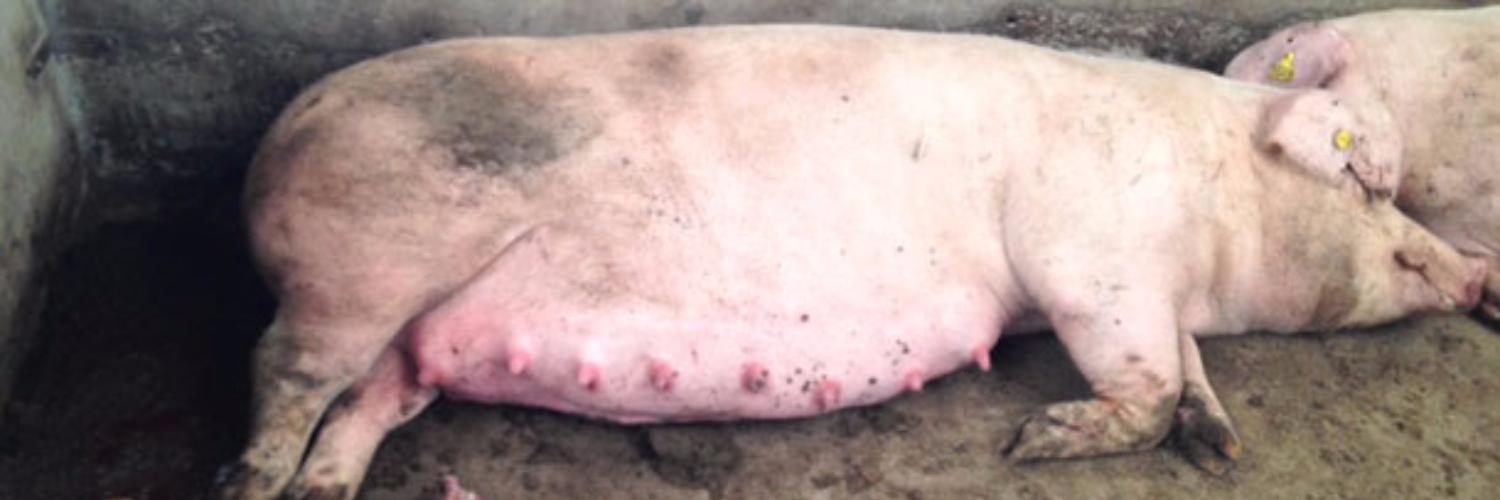Ketosis - a disease of highly productive sows, Accompanied by a violation of carbohydrate, fat, protein, mineral metabolism and an increase in the number of ketone bodies (acetone, в-oxymosphate and acetoacetic acids) in the body, is accompanied by acidosis, functional and structural disorders in the liver and other organs.
From the biochemical point of view, it can be characterized by the terms ketonemia, ketonuria, hypoglycemia, and a decrease in the level of glycogen in the liver.
Types of ketosis
The syndrome of ketosis can arise due to a lack of specific nutrients. This is due to inadequate energy consumption caused by an unbalanced diet (Primary ketosis) Or a bad appetite caused by a disease (Secondary ketosis).
With nutrient deficiencies (low levels of feed intake), the production of milk is reduced mainly due to the lack of precursors of glycogen. Later, an insufficient level of glucose for the mammary gland is observed, due to the inadequate synthesis of glucose in the liver.
It must be remembered that the mammary gland requires a lot of glucose, which in turn is a precursor of lactose. However, the mammary gland continues to produce milk due to hormonal stimulation and, accordingly, the use of glucose. This leads to hypoglycemia.
Clinical manifestation of sow ketosis
Clinical manifestation of the disease of envy from the strength and duration of action on the body of ketogenic factors, the degree of ketogenesis, adaptive abilities and individual characteristics of the animal.
More often the disease manifests itself in the latent (Subclinical) Form. In this case, the symptoms are erased, barely noticeable. One can note a change in appetite, oppression.
Clinical form of ketosis in animals accompanied by excitation, hyperesthesia. Excitation is soon replaced by oppression, animals become lethargic, drowsy, more lie. In the acute course, tachycardia is observed, body temperature is usually within the normal range.
Fatiness quickly decreases, often show an increase and soreness of the liver. In laboratory tests of blood, urine and colostrum, ketonuria, ketonemia, ketonolactia, hypoglycemia, acidosis are diagnosed.
When the pathoanatomical autopsy is characterized by degeneration in various organs, especially in the liver. In the acute severe form of the disease, the liver is enlarged in size, flabby consistency, yellowish orange, the surface of the sebaceous section, the gallbladder is usually stretched, the bile is thick and viscous.
In the chronic course, the liver may be denser, normal in size. It exhibits a pronounced diffuse large-droplet fatty dystrophy, combined with carbohydrate and protein dystrophy.
The kidneys are usually enlarged in size, the boundaries between the layers are not clearly expressed, the enlarged cortical layer has a yellowish tinge. In the heart under the epicardium, there are significant fat deposits, myocardium flabby, anemic. Ovaries in some cases are dense with the presence of fibrinous complications and cysts.
The diagnosis is established on the basis of clinical signs, results of a pathoanatomical autopsy and laboratory studies.
Treatment and Prevention of sows ketosis
In the course of treatment, it is first necessary to balance the diet for the main nutrients, macro- and microelements. In the diet include feed rich in high-quality fiber, a lot of NIR (neutral detergent fiber), little FDC (acid detergent cellulose) and KDL (acid detergent lignin).
The ratio of CID-Lysine to net energy in the diet of pregnant sows should be 0.66 g / MJ. The level of clean energy in the diet is 8,9-9 MJ. The minimum level of essential fatty acid is 18: 2 (Linoleic) 1%.
From drugs use glucose in the form of 10-20% solution intravenously 1-2 times a day for 2-3 days (in combination with insulin). The sick animals are prescribed methionine, B vitamins, vitamin C, inside they give sugar or another glucogenic agent.
To prevent, one needs to remember: despite the fact that the diet of the pregnant sow is the cheapest, it does not mean that it should consist of substandard feeds!




